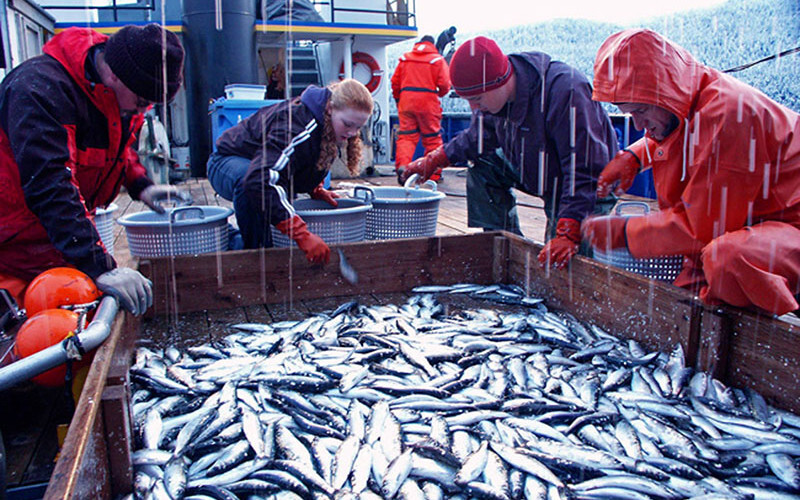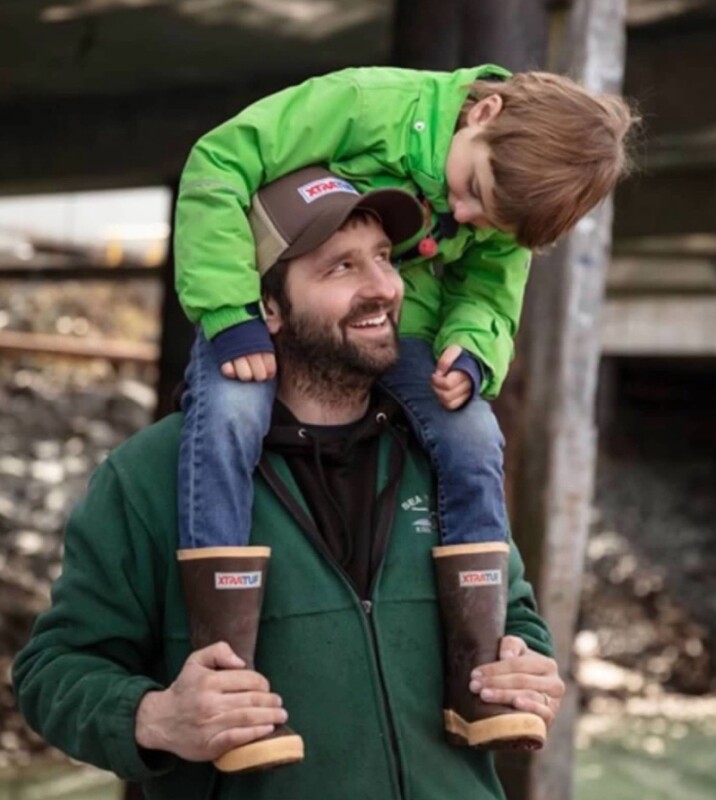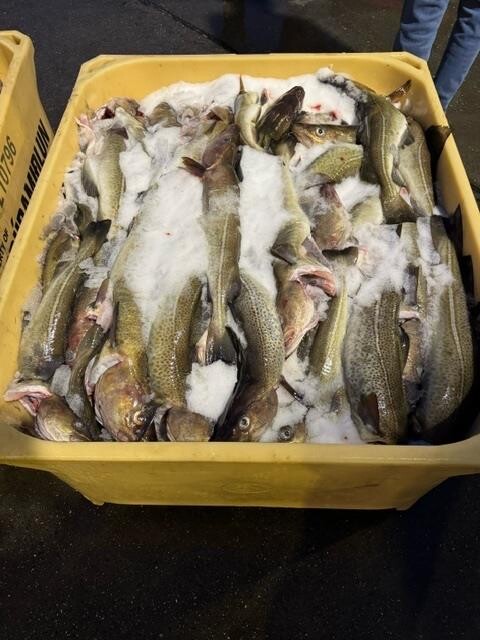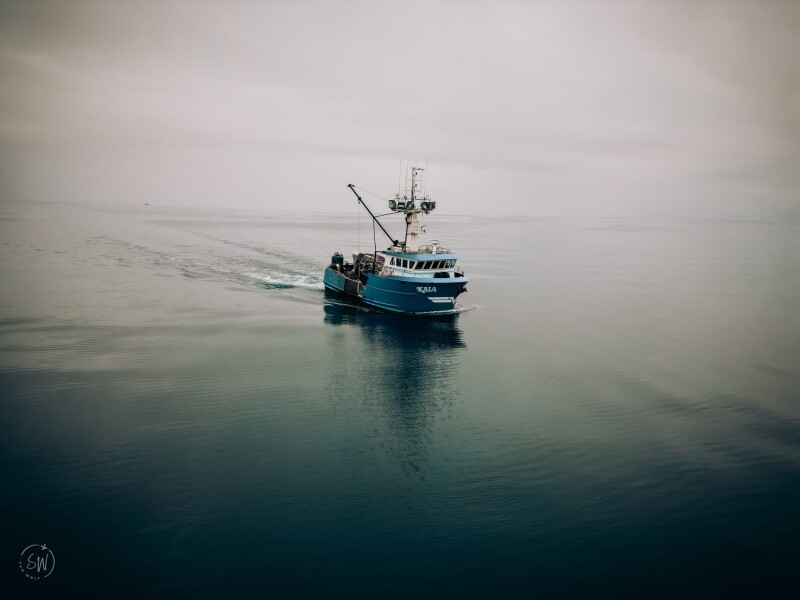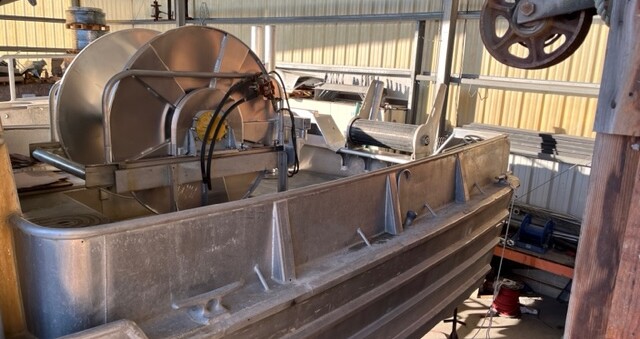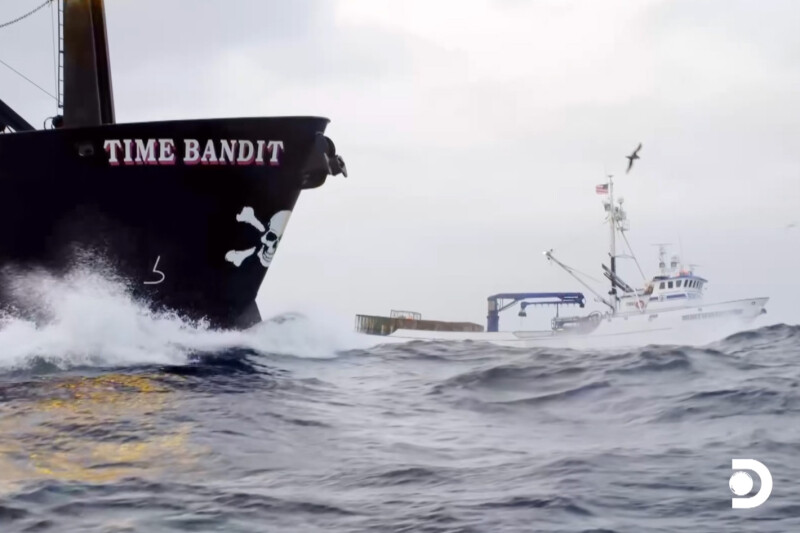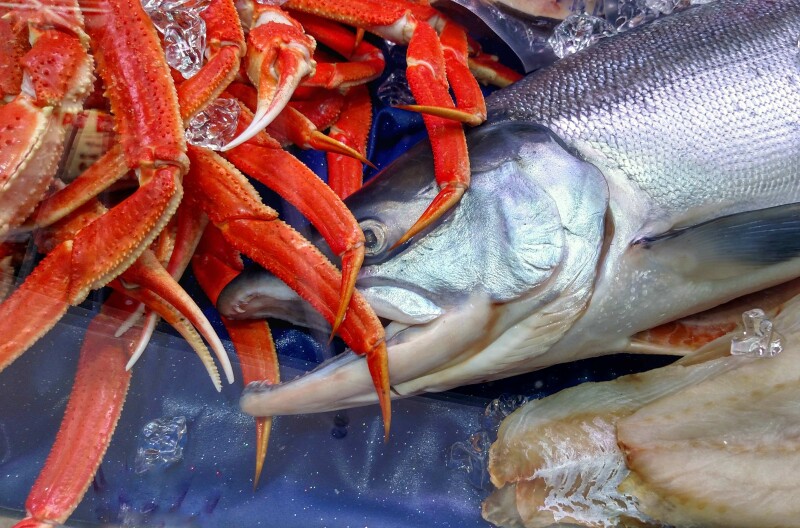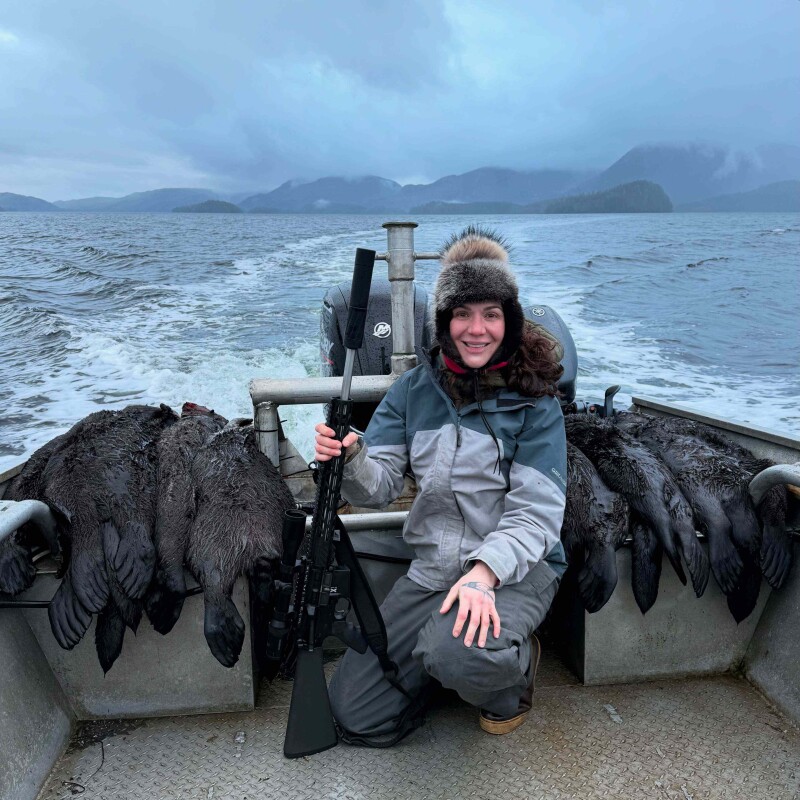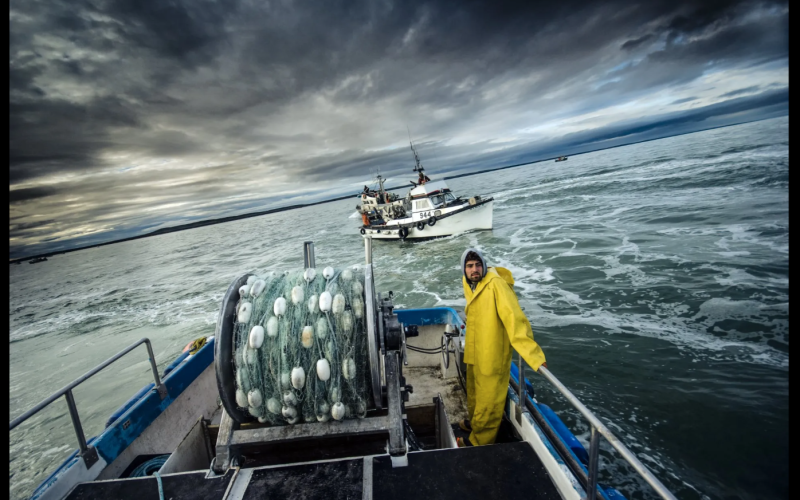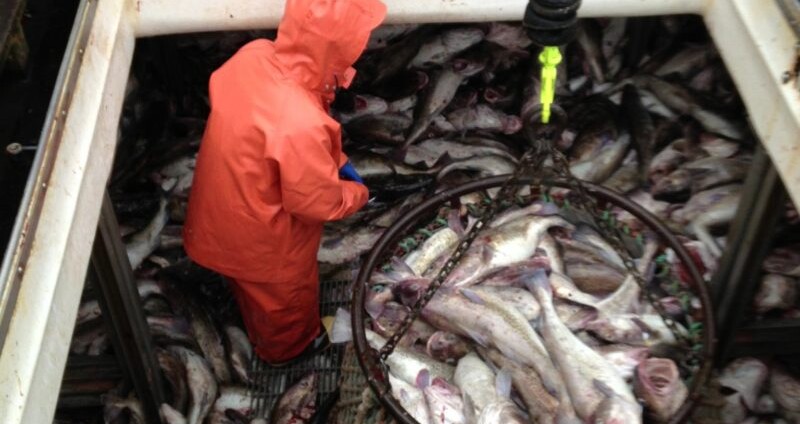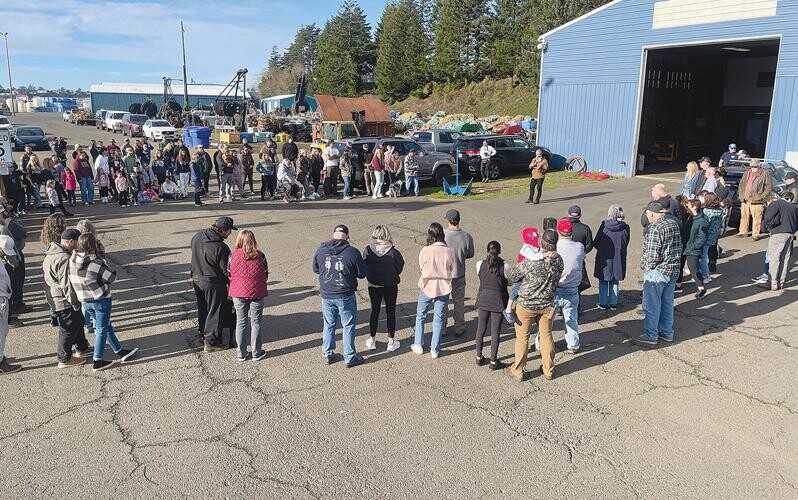Herring fishery underway draws little attention or interest
Published onThe arrival of herring at Sitka Sound signals the start of spring in Alaska, but the fishery that began there on March 22 has attracted little notice or interest. Roughly 2,740 tons of herring (6 million pounds)were harvested through March 25on an allowable harvest of 36,720 short tons (73.44 million pounds). Theres plenty of herring, which are valued for their roe, or eggs. However, interest in that high-end product has bottomed out over several decades to a level where most fishermen have simply hung up their nets. Fishery manager Aaron Dupuis with the Alaska Dept. of Fish and Game in Sitka said that with its limited capacity, the Sitka harvest could be around 1,000 tons per day, which is normal. The fishery typically wraps up in less than two weeks. In 2024, a handful of the 47 permit holders at Sitka Sound took 12 ...
Read MoreNative fleets diminished by fishing limits- is change possible?
Published onFor generations, Alaskas Indigenous communities have relied on commercial fishing as both a livelihood and a cultural cornerstone. But decades-old federal policies restricting access to fisheries have left Native-owned fleets struggling to stay afloat. Now, Indigenous advocates and tribal leaders are calling for changes that would restore opportunities for Native fishermen. According to a recent report from KTOO, the federal Individual Fishing Quota (IFQ) system and other limited-entry programs implemented in the 1990s had devastating effects on many Indigenous fishing communities. While designed to stabilize the industry, these systems made it increasingly difficult for younger Native fishermen to enter the trade, ultimately diminishing the presence of Native-owned vessels in Alaskas commercial fisheries. In Angoon, Alaska, the harbor used to be packed with small, owner-operated fishing vessels, but its no longer the same. The Mayor, Peter Duncan, told KTOO, You just dont find a troller in ...
Read MoreFederal shakeup sparks uncertainty for Pacific fisheries
Published onFederal actions are causing uncertainty in the scheduled openings of Alaskas Pacific fisheries, raising concerns among fishermen and owner/operators about potential disruptions to the fishing season. Recent personnel changes within the National Marine Fisheries Service (NMFS) have cast doubt on the scientific assessments crucial for managing fish stocks in the region. According to the Alaska Beacon, three NMFS employees in Alaska were recently dismissed, creating unease about the continuity of scientific research that informs fisheries management. These individuals collected and analyzed stock assessment data, a key factor in determining sustainable catch limits. Their sudden removal has led to concerns that vital scientific work may be delayed or compromised just as fisheries prepare to open. The potential gaps in research have alarmed commercial fishermen, who rely on accurate stock assessments to guide their operations. Without up-to-date data, fishery managers face challenges setting quotas, which could result in either ...
Read MoreOne fishing family's fight for a better future
Published onPart Three of Eriks story. To read the previous article, click here. For more than a year, my wife and I researched shipping logistics, processing options in Alaska and the lower 48, vessel conversion options, and captain and crew interest in trying something new. Even with a proven example thriving in Iceland, was there enough interest within our own business to change our behavior?... The tipping point Whatever youre meant to do, do it now. The conditions are always impossible. Doris Lessing Coincidently, during this time, the Alaskan seafood industry collapsed around us. In the summer of 2023, we received a base price for sockeye salmon of $0.50 per pound, and cod fell from $0.45 in the A-season to $0.32 by the fall B-season. Longtime crew members departed for good in search of more steady employment. A dependence on large processors moving seafood as a ...
Read MoreNOAA cuts raise concern for the AK fishing industry
Published onBeginning on Feb. 27, the National Oceanic and Atmospheric Administration (NOAA) faced a 10 percent reduction in its workforce, with the termination of all probationary employees. The Alaska Marine Conservation Council (AMCC) acknowledged the news, which is expected to have significant repercussions for Alaskans, mainly fishermen. In a letter addressing the cuts, AMCC executive director Michelle Stratton emphasized the vital role NOAA plays in ensuring the safety and sustainability of Alaskas fisheries. First and foremost, safety at sea is paramount for the well-being of our fishing communities and the sustainability of our seafood industry, she wrote. Stratton shared that NOAA provides critical services, including weather forecasting, navigation support, and emergency response coordination. She warned that reducing these resources could increase risks for fishermen, leading to more accidents, loss of life, and economic hardships. Beyond safety, NOAAs science-based stock assessments and fisheries management systems are integral to sustaining Alaskas ...
Read MoreThe journey to seafood quality over quantity
Published onPart Two of Eriks story. To read the previous article, click here. The long road to independence In 2012, I partnered on a 58-foot fixed-gear vessel with my father and a high school friend, looking to tender in the summer and then target cod, halibut, and sablefish the rest of the year. I had a young family and wanted to stay closer to home, so I transitioned fully off the Baranof in 2015. The partnership lasted about three years, but we ultimately found that the aging vessel could only really support one family. I bought my father and friend out of the business and tried to keep the operation cash-positive. It didnt always work. We fished hard, almost year-round. Pacific cod was increasingly important for us and other fixed gear sectors, but I was continually disappointed by the quality, handling, and execution of our shoreside cod ...
Read MoreA fishing family’s journey to unlock the full value of catch
Published onA few weeks ago, my boat delivered a load of Pacific cod in Dutch Harbor, Alaska. While thats a daily sight this time of year, this delivery was special. After years of research and development, this was our first offload of pot-caught, gutted and bled, slurry-iced cod bound for fresh markets and custom processing in Seattle. The modest line-up of bright yellow Saeplast totes on the dock was a fraction of what a boat like ours typically delivers, but they represent a promising new endeavor more than two decades in the making. My quest for quality began in January 2001 in the Bering Sea. I was a 17-year-old green deckhand fishing opilio crab on the Westward Wind, a 170-foot catcher-processor. After crab season, we ventured west to the Aleutian Islands for pot-cod season. I was impressed that the boat functioned as its ...
Read MoreConversion broadens horizons for an Alaska gillnetter
Published onThis winter, the Bristol Bay gillnetter Starshipwas hauled at Maritime Fabrication's La Conner, Wash., boatbuilding facility for conversion work, so its owner can combination fish it in Southeast Alaska, said Maritime Fabrications general manager Isaac Oczkewicz. Hed take it out of service in Bristol Bay, where it would be gillnetting for salmon so he can combination fish it out of Petersburg, for both gillnetting salmon and longlining for halibut. The boats owner will be setting and hauling gear over the transom, thus the transom was lowered, and Maritime Fabrication built a deck reel and a stern roller that fits into the modified transom for longlining and gillnetting over the stern. A canopy frame was built over the boats cockpit to hold a skiff and possibly a cover, said Ockewicz. A combination shelter deck and skiff storage. Leaving Bristol Bay to work in other waters also meant theStarship required bottom ...
Read MoreDeadliest Catch boats ranked
Published onTheDeadliest Catchboats are as big a symbol of the Discovery Channel reality series as the oversized Alaskan king crab and snow crab they hunt for in the blistering Bering Sea. While there are some parts ofDeadliest Catchthat arefaked in the way Discovery reality series often are, those are real boats out on the freezing and tumultuous North Atlantic Ocean, weighing upwards of 370 tons. The sight of one of these behemoth and industrial, but somehow nostalgic, ships blasting through ocean spray as gulls soar overhead is a defining shot of the series. Names likeNorthwestern,Seabrooke, andWizardare as tied to the show as Sig Hansen, Phil Harris, and Keith Colburn. With F/V as a prefix ("Fishing Vessel"),the boats onDeadliest Catchset out from Alaskan harbors in the October king crab and January opilio crab(snow crab) seasons. Narrated by Mike Rowe,Deadliest Catchhas been on the air since 2005, outlasting ...
Read More$2.4M grant found supporting tribal households
Published onDOGE Alaska uncovered a $2.4 million grant awarded to the Sitka Tribe of Alaska. DOGE Alaska is a group of citizens who are researching waste, fraud, and abuse. Its a project and not a formal organization. The grant was awarded so their members could buy seafood from local fishermen. The priority was buying from commercial fishermen, also tribal members, so the money circulated back to the tribal economy. The Department of Agriculture awarded the funds through a grant program intended to help socially disadvantaged farmers and ranchers, according to Must Read Alaska reporter Suzanne Downing. The grant specifically allowed 1,000 tribal households to buy king crab, Dungeness crab, shrimp, salmon, and halibut through a contact by the Stika Tribe that would connect them to commercial fishermen. This is not subsistence or through the Supplemental Nutrition Assistance Program (SNAP). Downing reported that it is supposed to ensure greater food ...
Read MoreKeeping the balance: Tlingit hunter fights for shellfish and tradition
Published onThe Marine Mammal Protection Act (MMPA) of 1972 undoubtedly saved some species from extinction. Others, including sea otters, were reintroduced to Southeast Alaska in the 1960s and have rebounded to the point that they are depleting wild stocks of shellfish that local communities depend on. This threat the sea otters pose extends far beyond accessing food, says Heather Douville, a sea otter hunter from the Tlingit Tribe on Prince of Wales Island, in Alaska. It jeopardizes our ability to practice our culture, to pass down vital knowledge to future generations,and ultimately, it undermines our way of life. The health of our ecosystems and our traditions are intertwined, says Douville. Together with her father, Michael, who drives the skiff, Douville upholds the millennia-old cultural practice of hunting sea otters. To offset the costs of hunting and processing, she started a small business, Coastal Fur and Leather, to convert ...
Read MoreBristol Bay data show widening gap in fishermen’s earnings
Published onLast years lower-than-average Bristol Bay salmon harvest likely went a long way toward long-term polarization of the drift fleet between fishermen earning the highest and lowest revenues. As a trend, drift fishermen with the highest production in the fleet typically made double the earnings of fishermen with the lowest production. More recently, however, a dwindling number of top producers have been earning five times more money than fishermen at the bottom of the scale, A more dispiriting trend is how an increasing number of fishermen are falling from the middle into the bottom tier when it comes to their seasonal earnings. The Bristol Bay fishermen weve spoken with seem to have done very well or very poorly, with not much in the middle, says Sharon Lechner, president and CEO of the Commercial Fishing and Agriculture Bank (CFAB) in Anchorage. For those not familiar with fisheries economic tools ...
Read MoreAleutian Islands state-waters Pacific cod season opens
Published onThe Alaska Department of Fish and Game (ADFG) has announced the opening of the Aleutian Islands Subdistrict (AIS) state-waters Pacific cod season, along with the closure of the parallel season for all state waters west of 170 W longitude, effective Feb.1, 2025. The state-waters Pacific cod season opened at 12:00 p.m. AKST on Feb. 1 for vessels 100 or less in overall length (OAL) using pot gear, vessels 60 or less OAL using nonpelagic trawl or jig gear, and vessels 58 or less OAL using longline gear. Simultaneously, the parallel Pacific cod season closed for all gear types in the AIS west of 170 W longitude. All harvested Pacific cod must be retained. The daily harvest limit per vessel is set at 150,000 pounds (round weight), with a maximum of 150,000 pounds of unprocessed cod allowed onboard at any time. The ADFG statement ...
Read MoreTop shows to watch if you love 'Deadliest Catch'
Published onLocated in the Aleutian Islands port of Dutch Harbor, Alaska, brave fishermen risk their lives to bring delicious delicacies Alaskan king crab and snow crab. In the seriesDeadliest Catch,viewers watch as these people brave themselves on 40-foot waves, facing some of the hardest perils of nature, in order to bring up 700-pound crab pots. One mistake could equal disaster. While this series is a reality show documenting the day-to-day operations aboard fishing vessels in the Bering Sea, it is stillan intense and suspenseful account of humans vs. nature. And it isnt the only show bringing that trope toreality TV. With the high risk of injury and even death in this line of work, series such asWicked TunaandIce Road Truckersalso bring viewers into the world of strange, dangerous, and yet necessary jobs, aspects of the world that they might not know much about. From the choppy ...
Read MorePodcast: Galley Stories EP 104 Deckboss Ian Vincent
Published onWelcome to "Galley Stories, Stories of the Bering Sea and Beyond!" A podcast proudly supported by National Fisherman and Pacific Marine Expo. Hosted by Mark Caylor, we invite you to embark on a captivating journey as we delve into the depths of the Bering Sea, uncovering remarkable tales that extend far beyond the ocean's edge. Join us for thrilling adventures and extraordinary encounters in the world of maritime exploration. Listen or download the latest podcast episode: EP: 104 Deckboss Ian Vincent "Fishing, It's Just Like Camping" Website: www.galleystories.net Follow on Social Media: Twitter: www.twitter.com/Galleystories Facebook: www.facebook.com/Galleystories For more info about the Galley Stories podcast, contact: Mark@Galleystories.net
Read MoreCommercial fishing boats depart for AK
Published onA number of the larger commercial fishing boats that call Newports Yaquina Bay their home headed out last week for the annual trek to Alaskas Bering Sea. It can take eight to 10 days for them to make the journey up north, depending on the weather. Boats from Newport will be docking either at Dutch Harbor or Kodiak, where they will be based while fishing for pollack and cod, a fishery that generally lasts for several months. The Port of Newports International Terminal was hopping with activity last week as boat owners and their crews made final preparations. And as has been the custom for a number of years, part of the preparation process before heading up to Alaska involved holding a prayer service, asking for safety for the fishing crews and their loved ones at home, and for a bountiful harvest. Read more.
Read More




